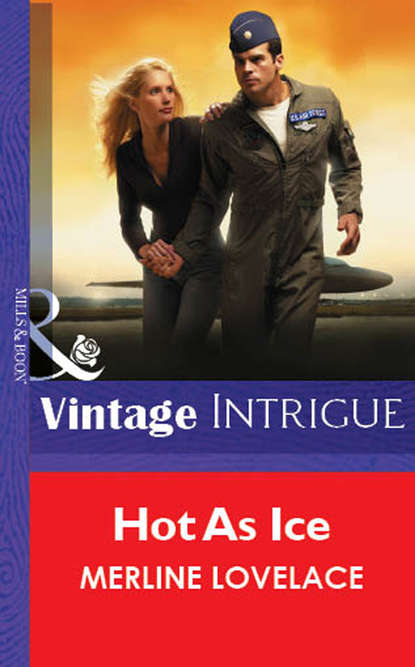По всем вопросам обращайтесь на: info@litportal.ru
(©) 2003-2025.
✖
Hot As Ice
Автор
Год написания книги
2018
Настройки чтения
Размер шрифта
Высота строк
Поля
Diana shook her head, both repelled and excited by the possibilities. Tremendous advances occurred in the field of genetics every day. Just last year paleoarcheologists had unearthed a frozen, stone-age mammoth and had hopes of crossing its DNA with that of a modern-day elephant. Still, for every step forward, there were a number taken back.
“Best I recall, Dr. Wozniak’s clone lived all of two days,” she said slowly.
“If this one lives two hours, you’re going to be right there beside him, holding his hand.” Nick’s gaze drilled into hers. “The president wants everything about this man kept absolutely secret until we ascertain the facts surrounding his plane’s disappearance. In the remote chance they actually bring Major Stone—or some version of Major Stone—back to life, we want you to act as his handler.”
“But…”
“He’ll be confused, frightened. Your job is to get next to him, Artemis. Win his trust, find out what happened all those years ago.”
“All right. When do I leave?”
“An air force C-21 is standing by at Andrews, fueled and ready for takeoff. I advised the pilot that you’d be there in an hour.”
“An hour!”
Diana gulped down an instinctive protest. She had planned to have dinner with Allen tonight. She’d already cancelled twice this week.
She consoled herself with the reminder that Allen McDermott was a brilliant, dedicated scientist in his own right. Although he knew nothing about Diana’s work for OMEGA, he understood that the pressures of her job at the Institute often required her to back out of their dates at the last minute. Allen would understand.
She hoped.
Flipping the folder shut, Nick slid it across the desk. “This file includes a complete background dossier on Major Stone—his academic reports, military records and a psychological profile. By the time you reach the Arctic, you’ll know all there is to know about the man.”
Diana had plenty of time to digest the file while a sleek, twin-engined C-21 ferried her to Eilson Air Force Base, just outside of Fairbanks, Alaska. There she boarded a four-engine turbo-prop C-130 Hercules equipped with skis.
When she finally climbed out of the 130, air chilled to a lethal twenty below by howling winds slashed at the eye and mouth slits in her ski mask. Dazzling blue-white light shimmered on the vast sheets of snowy ice, almost blinding her. Clumsy in her five layers of thermal underwear and outer Extreme Cold Weather gear, she waddled to the similarly bundled driver who zoomed up on a snowmobile just as the C-130 touched down.
“Welcome to the Arctic, Dr. Remington. Climb aboard and we’ll get you out of the wind.”
Huddled behind the driver, Diana skimmed across the packed snow to the collection of modular, boxlike buildings that constituted the U.S. Arctic Oceanographic Research Station. Once inside, she stripped off the bright orange cold weather jumpsuit and most of her layers.
“Diana!”
Greg Wells hurried forward to greet her. Short, bald, and radiating unbridled excitement, he was the world’s leading expert on cyrogenetic regeneration. Diana had met him before at conferences and wasn’t particularly impressed.
“Dr. Goode and I were thrilled to hear you were joining us,” he said, pumping her hand. Without giving her a chance to do more than catch her breath, he swept her down a narrow corridor crowded with boxes and equipment. “I know you’re anxious to view the find. He’s right in here.”
A few moments later, Diana stepped into a frost-coated storage annex and almost fell over her boots. She stumbled to a halt, mesmerized by the body stretched out on a metal table.
He was naked, bathed in harsh white light from head to toe, and absolutely the most magnificent male specimen she’d ever seen.
Chapter 2
“It’s been ten days.”
Frustration added a grating whine to Greg Wozniak’s voice as he glanced around the small group of scientists, researchers, and intelligence analysts crowded into the oceanographic station’s mess.
Several day’s growth fuzzed the cheeks of the men. Red rimmed their lids and traced fine lines through the whites of their eyes. Shoulders slumped under layers of wool shirts and thermal underwear.
They were all tired, all showing signs of sleep deprivation and disappointment. The initial burst of excitement that had sustained them through days and nights of constant experimentation and vigilance had seeped away.
“We brought Stone’s body temperature back to normal range almost a week ago,” Wozniak reminded the group unnecessarily. Shoving his coffee mug aside, he pleaded his case for the third time in as many hours. “We’ve pumped every possible combination of drugs through the Iceman’s veins.”
“He has a name,” Diana put in coolly.
Ten days of constant contact with the short, ro-tound cyro-geneticist hadn’t improved her opinion of him. Wozniak shrugged and picked up the threads of his argument.
“We can’t use the paddles on Stone’s heart many more times or we’ll completely destroy the muscle. I think it’s time to officially declare him dead and let me get on with the cloning process.”
Across the table from Diana, Dr. Irwin Goode wrapped thin hands around his mug. Liver spots darkened his fragile skin. His fingers trembled. She’d heard the Nobel Prize winner speak at a convention some years ago and was saddened to see how much the brilliant scientist had aged. If his body had succumbed to the march of time, however, his mind still functioned with razor-edged sharpness.
“Major Stone’s brain showed evidence of low level activity after the first shock,” the silver-haired Goode reminded his younger colleague calmly.
“Not enough to restart his biorhythms.”
“But enough to allow an early determination that he’s not completely brain dead. As you’re well aware, the law as currently written doesn’t allow cloning live human subjects without their consent.”
“I know!” Wozniak groused. “It’s just my luck Stone doesn’t have any close relatives left alive to authorize the procedure.”
With some effort, Diana bit back a sarcastic comment on his warm, caring humanity.
“We agreed on one more attempt,” Goode reminded him. “If the current combination of proteins and acids we’re pumping into him don’t produce cell activity, we’ll reevaluate the protocol.”
“Pull the plug, you mean,” Diana muttered.
Behind the lens of his rimless glasses, Dr. Goode’s eyes held a look of mild reproof. “I mean we’ll reevaluate the protocol.”
She bit her lip, embarrassed by her unprofessional remark. After ten days of intense, around-the-clock trial and error, they were all on edge. And just about out of options.
In her heart of hearts, Diana didn’t hold out any more hope of reviving Stone than the others. Yet every time she touched his now warm skin or peered through a microscope at tissue samples to search for signs of protein regeneration, she seemed to lose a little more of her scientific objectivity.
In ten days, Major Charles Stone had become a personal challenge to her, almost a quest. Her years of study, her countless hours of research, all seemed to have led her to this remote, isolated Arctic station.
To him.
Metal chair legs scraped as Diana shoved away from the rickety table. She wasn’t ready to give up on the pilot yet. She couldn’t. With a nod to her colleagues, she left the small, boxlike room that served as mess hall, card room and conference center.
The recovery team’s arrival had severely crowded the already cramped station. To make room for the extra supplies and equipment, the obliging oceanographers had shoved their computers against walls and moved their acoustical sounding devices into the long, snakelike tunnel that connected the collapsible sheds.
Generators hummed as Diana picked her way past stacked boxes and various pieces of gear. The hot air pumped through the double walls kept the temperature inside the station at a toasty sixty-five degrees, so the occupants didn’t have to pile on too many layers. Boots, snug leggings and a wool plaid shirt worn open over thermal silk long johns provided Diana with sufficient warmth and a measure of mobility.
Before entering the storage shed where Major Stone lay suspended between life and death, she ducked into the cramped side room the recovery team had converted into a lab. She’d already checked the latest cell samples once this morning but wanted another look.
Hooking a stool with her heel, she dragged it closer to the long, flat counter filled with racks of test tubes and culture dishes. As Dr. Goode had as much as admitted, they were down to their last hope. They’d tried every possible protein and nucleic acid combination within the range of Major Stone’s molecular sequencing. If this combination didn’t work, if the protein and nucleic acid didn’t bind…
Flicking the switch on a laser scanning microscope, Diana slipped a slide with the latest sample under the lens. The air force had spared no cost to lease and ship in the powerful scope Dr. Goode had requested. It was one of only three in use anywhere in the world outside heavily funded and usually guarded research facilities. While Diana squinted at the hugely magnified cells, the microscope’s computers whirred through the two hundred thousand plus known protein sequences to verify the sample’s profile.
Mere seconds later, the screen blinked a complex code. With a click of the mouse, Diana sent the code to the computer’s built-in chart function.











